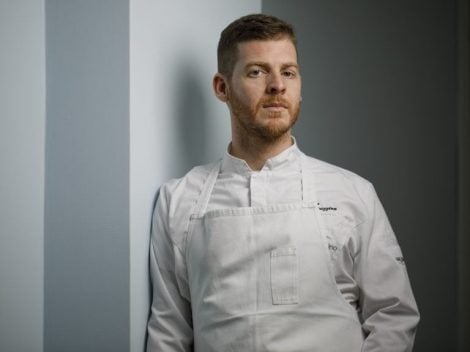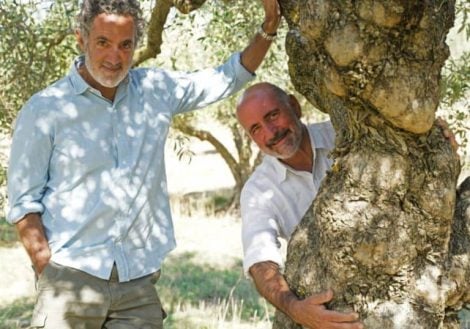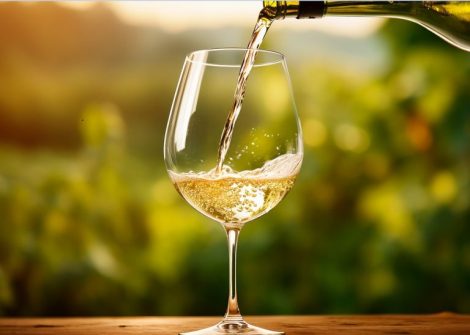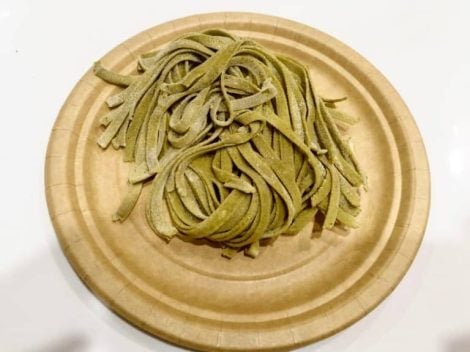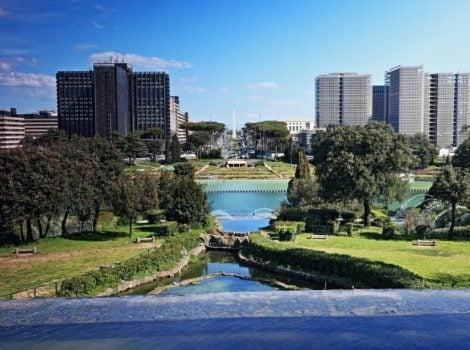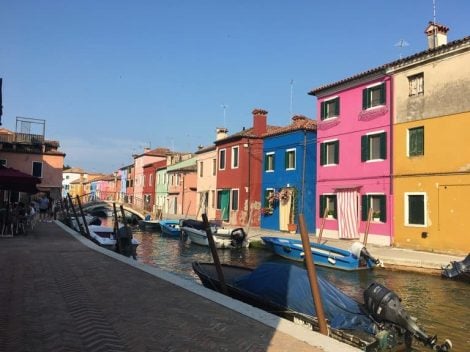Colli Berici: a territory to discover
It may be because the extent of the vineyards is neither large nor small (3,000 hectares of vineyards), or perhaps because the neighbouring denominations, such as Valpolicella, Soave, Conegliano Valdobbiadene or Bardolino make more "noise" and mostly other figures, the fact remains that the district of the Colli Berici - a sort of hilly island that stands out in the plain between Vicenza and Padua - has maintained a secluded, almost shy character in the frenetic world of mass communication. The positive side of all this is that this territory preserves its landscape's charm intact, made up of forests, vineyards, cultivated fields, scattered with small well-kept centres and twenty-four Palladian villas that together with the twenty-three palaces of the city of Vicenza are historically part of the area's UNESCO World Heritage Sites.
Tourist and food and wine destination
The Colli Berici area is a tourist and food and wine destination that deserves to be better known. It has something unique, peculiar, which you will hardly find elsewhere. Firstly, the terroir, with a great wine vocation. The soils of the vineyards derive mainly from marly limestone, calcareous conglomerates, red clays and basaltic rocks of volcanic origin. The altitude of the vineyards, which reach up to 500 metres above sea level, is in a position that on the one hand is linked to the pre-Alpine system and on the other is affected by the influences of the nearby Adriatic, which mitigates extreme temperature fluctuations at night, both seasonally and in the day cycle. The orientation of the hilly slopes must also be considered: some - those to the north-east - are exposed to the locally named "bora" wind, which can make the climate harsh and subject to sudden changes during the winter. But each valley, each hillside has its own microclimate, influenced by the exposure, from the presence of woodlands, from the presence of more or less wide valleys. A soft and varied landscape, in short, with a mild climate and low rainfall, which is the cradle of biodiversity, with vineyards elbowing the forests and olive groves in a picturesque alternation.
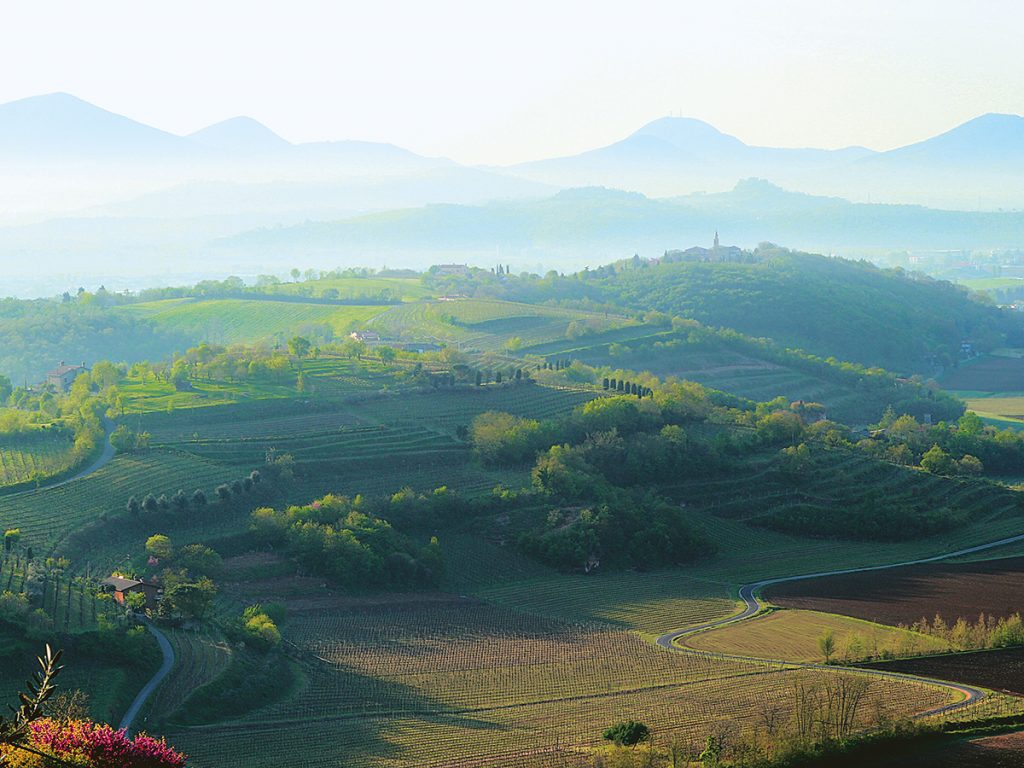
An excellent terroir
Everything contributes to making the Colli Berici an excellent wine area. Especially for producing great red wines. But this is not a new story: cabernet franc, for example, which is at home here, was the first to receive the Doc. The red tai (which is none other than cannonau, or grenache, or garnacha) is one of the most common red grapes here, but carmenère (once confused with cabernet franc) is gaining space, while cabernet sauvignon, merlot and pinot noir are grown in the area, with excellent results since the early 19th century, when the territory was under the Austrian Empire. And among the whites, if garganega is the genius loci, pinot bianco and grigio, sauvignon blanc, chardonnay and incrocio Manzoni complete a truly complex palette.
Zoning and land use manual
Finally, in order to guide wine growers and producers to better express the combination of grapes and territory, the Consorzio Tutela Vini dei Colli Berici (which also includes the contiguous Vicenza Doc denomination, born just over twenty years ago) promoted between 2002 and in 2005 a zoning study with Veneto Agricoltura which led to the publication of the Manuale d'uso del Territorio, a fundamental tool for planning the future of the appellation, where classic companies and a new generation of wine producers have taken up the challenge and are determined to place the wines of these hills among the true excellences of Italian oenology. A possible challenge, where the synergies between the companies and the Consortium are fundamental. This, moreover, gathers 26 companies (of which 3 are Social Cellars) which represent over 90% of the production of the Colli Berici area and practically all of the Vicenza Doc wines. In short, the charge has started, with Cabernet Sauvignon, Merlot and Tai Rosso in the front row (the reds are 63% of the production), but with excellent results also for the whites… Just taste the Sauvignons and Pinot Blancs of the latest harvests to understand what we mean.
Hospitality culture
Italian consumers have understood this, but a growing export (we are talking about 25% of the total) mainly oriented towards Northern Europe (and with important shares also in the USA and Russia) makes it clear that we are at the dawn of a new phase for this beautiful territory. We spent a few days in the area, divided between visits to wineries, tastings and more tastings, but also visits to historic villas and museums. We have found a territory that's rich in excellence and that is determined to promote them and itself and that is not afraid to confront international oenological Gotha. In short, the Colli Berici hills are ready and organised, also in terms of hospitality, reception and organisation, from classic hotels to a dense network of agriturismo farmhouses and bed and breakfasts, not to mention a refined gastronomic scene rich in typical local products, ready to welcome an Italian and international tourism clientele attentive to the taste for beauty and culture. And we, glass in hand, are convinced that they will have great success.
Colli Berici in 12 wines for 6 cellars
We visited the six most representative wineries of the area and tasted 12 wines: for each company we tasted the last produced vintage of their label that best expresses the terroir (in some cases they were barrel samples) in addition to an old vintage (Giuseppe Carrus, Gianni Fabrizio and Marco Sabellico participated in the tasting).
PuntoZero
Young and beautiful reality run by the de' Besi family. Born in 2006, we had to wait a few years to see the first wines in the bottle. The company is located between Lonigo and Sarego and has an estate of about 40 hectares of forests in which there are 11 hectares of vineyards. Seven wines produced, from different grape varieties. A white made from Pinot Bianco grapes (called Trasparenza), the remaining are all reds. There is a classic Bordeaux blend (the Dimezzo), a Cabernet Franc (Idea), the Tai (from red Tai, clone of Grenache), a Carmenere, Virgola made from Syrah grapes and, finally, Punto, which for the company represents the highest territorial expression. Colli Berici Merlot Punto '18 shows a complex nose and great fruit intensity. It is a barrel sample but it looks very promising. The Merlot Punto '13 shows no signs of weakness due to age, the tertiary notes begin to arise, but the fruity and spicy part remains in evidence. The mouth is long, full, deep and with a savoury finish of great charm.
PuntoZero - Lonigo (VI) - via Monte Palù, 1 - 049 659881 - puntozerowine.it
Giannitessari
The Gianni Tessari winery extends over many hectares on the border area between the provinces of Vicenza and Verona, precisely within the Soave and Monti Lessini denominations. There was also a bet on the Colli Berici, as evidenced by the beautiful estate. Here the most cultivated grapes are the Bordeaux varieties, which go alongside the traditional Tai Rosso. The company has 50 hectares of vineyards for a production of around 350,000 bottles. Our tasting focused on Colli Berici Rosso Pianalto '17, made from cabernet sauvignon, merlot, carmenere and tai rosso grapes, a still very young wine slightly marked by the aromatic oak. The mouth is warm and powerful, but everything is well dampened by acid freshness and a savoury finish. Colli Berici Rosso Pianalto '13 (from cabernet, merlot and carmenere) is spicy and with touches of wild berries, the mouth is creamy and enveloping and the finish is full.
Giannitessari - Roncà (VR) - via Prandi, 10 - 0457460070 - giannitessari.wine
Inama
Giuseppe Inama started his winery more than half a century ago, first on the hills of the classic Soave and later, by the will of his son Stefano, in the heart of the Colli Berici, quickly becoming a point of reference for both denominations. Today, alongside Stefano, there are his sons Matteo, Alessio and Luca who make a decisive contribution to directing the path of the company, which is increasingly devoted to reducing environmental impact and producing wines that embody the territory of origin. For Inama, the most representative wine of the Colli Berici is the Oratorio di San Lorenzo, which takes its name from the locality in which it sits. This is a real cru in which only the best grapes are selected. Since 2009 it has been released as a Riserva. We tasted the Colli Berici Carmenere Oratorio di San Lorenzo Riserva 2016, still very young, fascinating in its spicy, undergrowth and blackberry aromas, with an agile and snappy mouth, but also pulpy and thick. The Colli Berici Carmenere Oratorio di San Lorenzo Riserva 2009 doesn't appear to be afraid of ageing, the nose grows in complexity, does not abandon the fruit and is enriched with notes of pepper, noble resins, pine bark and tobacco; the mouth is vibrant with freshness and a clean, deep finish.
Inama - San Bonifacio (VR) - loc. Biacche, 50 - 0456104343 - inama.wine
Piovene Porto Godi
Tomaso Piovene's company is located on the south-eastern side of the Colli Berici hills, where the only rocky walls are located. We are talking about more than 200 hectares dedicated to arable land, woods and olive groves, complemented by about forty hectares of vineyards. The area, extremely hot and dry, guarantees continuous maturation of the Bordeaux grape varieties, giving life to a production that has its distinctive trait in the fullness of the sip. The winery produces about 120,000 bottles and also includes an agriturismo farmhouse where guests can enjoy tastings and taste typical products. The winery has always focused on Tai Rosso, a clone of Grenache that arrived here centuries ago and that is now well acclimatised. Delicious, in our tasting, the fresh and fragrant Colli Berici Tai Rosso Thovara '19, with notes of rose, blackberry and currant, with a touch of sweet spices and floral hints. The fruit is ripe, but crisp, the acid shoulder is not lacking and the finish is very clean. We are less fortunate with the Colli Berici Tal Rosso Thovara '03, this bottle is not in very good shape, understandable after almost twenty years. The beauty of wine is also this. The rest of the range is superb.
Piovene Porto Godi - Villaga (VI) - fraz. Toara di Villaga - via Villa, 14 - 0444885142 - piovene.com
Dal Maso
Now close to celebrating half a century of life, the winery founded by Luigino Dal Maso is an absolute reference point for enthusiasts who explore the territories of Gambellara, Lessinia and, last but not least, the Colli Berici. Nicola together with sisters Silvia and Anna has transformed a winery dedicated to the production of simple and everyday wines into one that enhances the territory. In all there are 30 hectares of vineyards for a production of around 300,000 bottles. The area is characterised by reds with great body and character, as demonstrated by the Colli Berici Merlot Casara Roveri '19 that's rich and multifaceted, with aromas of ripe cherry and plum. The mouth combines power with freshness and acidity and is always well integrated with the material. Silky tannins and a savoury finish complete the tasting. The Colli Berici Merlot Casara Roveri '02 stands the test of time very well, the tertiary aromas are there (between wet earth, cigar, noble resins) but the fruit is still present (especially the berries). The mouth is silky and fine, long and of excellent progression.
Dal Maso - Montebello Vicentino (VI) - c.da Selva, 62 - 0444649104 - dalmasovini.com
Cavazza
The Montebello winery, founded by Giovanni Cavazza almost a century ago, is distributed between the Gambellara area, where the Garganega grape dominates, as well as the nearby Colli Berici. Today the fourth generation manages the vast vineyards, the production in the cellar and the marketing side of the business, following a style that oscillates between the finesse of the whites and the sunny richness of the reds. The company produces almost 800,000 bottles, thanks to the 135 hectares of vineyards. In the Colli Berici hills, the focus is on red varieties, starting with the prestigious Cabernet which here, as we have seen, has long since acclimatised to perfection. The Cicogna line includes four labels and represents the "distillation of a terroir" for the company. Colli Berici Cabernet Cicogna '16 is truly intriguing: with the complicity of a great vintage we have a fresh and mentholated red, long and with an elegant and savoury finish. The surprise, however, comes from Colli Berici Cabernet Cicogna '91: after thirty years it is still a wine of great charm, still vital and agile in terms of freshness, with a slight tannic perception and a finish all played on flavour. The nose is a kaleidoscope of aromas: the tertiaries give spiciness and undergrowth, while there is a pinch of primarity that reminds us of the fruit. Truly memorable.
Cavazza - Montebello Vicentino (VI) - c.da Selva, 22 - 0444649166 - cavazzawine.com
5 protagonist grape varieties
Cabernet Sauvignon
Around 1830-1840 the estates in Costozza passed from the counts Trento to Prince Ernesto D'Arenberg who began to plant grape varieties varieties of French origin on the Colli Berici. Thanks to him, the Bordeaux grapes and various pinots arrived at that time. Cabernet Sauvignon was born in Bordeaux in the Médoc area, probably in the mid-19th century, from a spontaneous cross between Cabernet Franc and Sauvignon Blanc. It therefore belongs to the large Carmenet or Cabernet family and for this reason it has long been confused with Cabernet Franc and Carménère. Today it is the most cultivated red grape variety in the world for the production of wine. Starting from the Costozza area, it spreads in the Colli Berici hills thanks to the Da Schio family and with about 140 hectares it is today the grape with the largest extension in the area. It sprouts early and ripens late and its clusters tend to be small and compact, even the berries that have thick skin are small. Grown on loose and well-drained soils it produces tannic and full-bodied reds made for long aging. However, it remains a grape that easily adapts to different soils and climates.
Cabernet Franc
The numerous synonyms with which Cabernet Franc is known (Vidure, Carmenet, Breton, Achéria) is proof that we are in the presence of an ancient grape for which there is no certainty regarding origin. Numerous hypotheses have been made about the origin of the grape variety. The most immediate attributes it to a Bordeaux origin; for others it would have been born in the Loire valley or even in Spain. in the Basque Country. In the Gironde, until the end of the 19th century, it was confused with Carménère and Cabernet Sauvignon: this confusion continued in Italy until a few decades ago. Today Cabernet Franc has about 70 hectares in the Colli Berici. The fact that Cabernet Franc entered the Colli Berici Doc in 1973, the first Cabernet with a designation of origin in Italy, underlines how important this area was for the spread of Bordeaux grapes in our country. It is a vigorous cultivar that has medium-sized and less compact clusters than Cabernet Sauvignon, compared to which it ripens earlier. Less tannic and more fragrant than Sauvignon, Sauv Franc brings finesse and balance to blends.
Carménère
The "Carmeynere" is an ancient grape of Gironde (spontaneous cross between Cabernet Franc and Gros Cabernet) whose first references date back to the second half of the 18th century. At that time the base of the prestigious reds of Médoc, but only a century later, with the scourge of phylloxera, it seemed definitively extinct. Almost completely disappeared, Carménère re-emerged in Chile in 1971 when ampelographer Claude Valat realised that many Merlot vineyards were just Carménère. This variety has become, together with Tai, one of the two Colli Berici symbolic cultivars. Thanks to the efforts of Giulio Da Schio who, at the turn of the 1800s and 1900s, spread the Carménère grape, erroneously calling it Cabernet Franc italico in the Colli Berici, from his Tenuta di Costozza; today there are about 35 hectares in production. At the beginning of the 20th century, the Da Schio family brought prestige to the territory with the first Cabernet dei Berici awarded in world competitions. Carménère is a not very productive grape, which needs perfect ripeness to best express its aromas of blueberry, black pepper and chocolate. Otherwise, the herbaceous sensations and pepper notes multiply.
Merlot
The first written records, dating back to the second half of the 1700s, refer to the "Merlau" grown in the Libourne area, not far from Bordeaux. Merlot comes from a spontaneous cross between Cabernet Franc and Madeleine Noire des Charentes. It is therefore a variety of clear Bordeaux origin, which has found great success with winemakers around the world in the last thirty years, so much so that it has become the most cultivated red grape variety in France. Although it arrived on the Colli Berici hills only towards the end of the 19th century––much later than the other Bordeaux vines––today, with 130 hectares of vineyards it is second only to Cabernet Sauvignon. The adaptability to very different soils and climates, a certain production generosity, combined with fairly early ripening, have facilitated its development. With a good control of yields, Merlot can offer important and very pleasant reds that are appreciated for the quality of great structure combined with soft sensations, due to the sweetness of the tannins and the controlled acidity.
Tai Rosso
By now the genetic correspondence between the Spanish Garnacha, the French Grenache and the Sardinian Cannonau with Tai aka Tocai Rosso is well established. For a long time its Spanish origin was considered unassailable, but lately many clues have emerged to refute this thesis and to lean towards the Sardinian origin. On the Colli Berici this grape, known by the name of Tocai Rosso or Tocai di Barbarano, spread in the wake of the experimental post-phylloxera vineyard in Ponte di Barbarano, created in 1926 on the advice of Ernesto Ghiotto. However, its arrival in the area remains mysterious, presumably as early as the 19th century. The various legends and actual events concerning it have given rise to the numerous names of the grape: Uva del Marangon (the carpenter's grape), Tokay, Italianised in Tocai and finally Tai since 1995. Tai, which germinates early and matures late, needs a warm climate. Its Mediterranean origin makes it suitable for dry and windy areas when planted on well-drained or even dry soils. It produces reds with excellent alcohol content and great softness, due to the low acidity and sweetness of the tannins.
The best tables
Altavilla Vicentina (VI)
Trattoria Da Berno – via Monte Grappa, 70 – 0444 288688 – daberno.it
Arcugnano (VI)
Antica Trattoria Moreieta 1890 – via Soghe, 35 – 0444 273311 – moreieta.com
Una Forchetta Trattoria Zamboni – frazione Lapio s.da per il lago di Fimon via Santa Croce, 73 – 0444 273079 – trattoriazamboni.it
Barbarano Mossano (VI)
Due Forchette Aqua Crua – frazione Barbarano Vicentino piazza Calcalusso, 11 – 0444 776096 – aquacrua.it
Da Sagraro – località Mossano via Loivaro, 1 – 0444 886217-347 2907072 – agriturismodasagraro.com
Lonigo (VI)
Tre Forchette La Peca – via A. Giovanelli, 2 – 0444 830214 – lapeca.it
Val Liona (VI)
Da Isetta – contrada Pederiva, 96 – 0444 889521 – trattoriaisetta.com
Due forchette Trequarti – località Spiazzo piazza del Donatore, 3 – 0444 889674 – ristorantetrequarti.com
Vicenza
Due Gamberi Fuori Modena-Cucina km 200 – contrà San Gaetano da Thiene, 8 – 0444 330994 – fuorimodena.it
Due Forchette Matteo Grandi in Basilica – piazza dei Signori, 1 – 328 1824572 – ristorantematteograndi.it
Una Forchetta Massimo Gusto – viale A. Giuriolo, 17 – 348 7153044 – massimogusto.it
Cicchetteria La Sosta – strada di Longara, 3 – 0444 042565 - @cicchetterialasosta/
Villa Da Schio and the historic wine cellar
Villa Da Schio is one of the most beautiful villas in the Vicenza province. Perfectly preserved and still lived in by Giulio Da Schio (in the case of a visit, it's a real pleasure to have him guide the tour) the Villa owes its importance to the espalier garden, which houses the sculptures of Marinali (1643-1720). In fact, the Villa was the sculptor's studio and his works, created here, now enrich the most beautiful Veneto villas. In addition, adjacent to the villa, there is a deep and suggestive cave which has always been used as a wine cellar. Here, until just over a decade ago, excellent wine was produced. The Guida Vini d’Italia reviewed the latest wines produced in its 2011 edition, a Cabernet Franc and a Cabernet Sauvignon from 2008. The winery still preserves old bottles of wine produced in this area. In fact, wine has been produced here for centuries: it was the Counts of Trento who in the 16th century exploited the fresh air of the caves through the use of ingenious "ventidotti" tunnels thus creating the first form of natural air conditioning. The Da Schio Counts gave impetus to production at the end of the 19th century and in 1910 the Costozza winery was officially founded. The name derives from the Italian term for "custodian" and comes precisely from its quarries in the place from which excellent building stone was extracted. Even today the quarries, given the climatic conditions that are generated, are used as mushroom beds. The entire structure, the garden of great botanical and architectural interest, the interior of the villa and the wine cellar in the caves, is open to the public for guided visits.
Villa Da Schio - Longare (VI) - fraz. Costozza - p.zza da Schio, 4 - 0444953195 - costozza-villadaschio.it
Where to eat
Altavilla Vicentina (VI)
Trattoria Da Berno – via Monte Grappa, 70 – 0444 288688 – daberno.it
Arcugnano (VI)
Antica Trattoria Moreieta 1890 – via Soghe, 35 – 0444 273311 – moreieta.com
Una Forchetta Trattoria Zamboni – frazione Lapio s.da per il lago di Fimon via Santa Croce, 73 – 0444 273079 – trattoriazamboni.it
Barbarano Mossano (VI)
Due Forchette Aqua Crua – frazione Barbarano Vicentino piazza Calcalusso, 11 – 0444 776096 – aquacrua.it
Da Sagraro – località Mossano via Loivaro, 1 – 0444 886217-347 2907072 – agriturismodasagraro.com
Lonigo (VI)
Tre Forchette La Peca – via A. Giovanelli, 2 – 0444 830214 – lapeca.it
Val Liona (VI)
Da Isetta – contrada Pederiva, 96 – 0444 889521 – trattoriaisetta.com
Due Forchette Trequarti – località Spiazzo piazza del Donatore, 3 – 0444 889674 – ristorantetrequarti.com
Vicenza
Due Gamberi FuoriModena-Cucina km 200 – contrà San Gaetano da Thiene, 8 – 0444 330994 – fuorimodena.it
Due Forchette Matteo Grandi in Basilica – piazza dei Signori, 1 – 328 1824572 – ristorantematteograndi.it
Una Forchetta Massimo Gusto – viale A. Giuriolo, 17 – 348 7153044 – massimogusto.it
Cicchetteria La Sosta – strada di Longara, 3 – 0444 042565 - @cicchetterialasosta/
Wineries
Cavazza - c.da Selva, 22 - Montebello Vicentino (VI) - www.cavazzawine.com
Dal Maso - c.da Selva, 62 - Montebello Vicentino (VI) - www.dalmasovini.com
Piovene Porto Godi - fraz. Toara di Villaga - via Villa, 14 - Villaga (VI) - www.piovene.com
Inama - loc. Biacche, 50 - San Bonifacio (VR) - www.inama.wine
Giannitessari - via Prandi, 10 - Roncà (VR) - www.giannitessari.wine
PuntoZero - via Monte Palù, 1 - Lonigo (VI) - www.puntozerowine.it
Villa Da Schio - Longare (VI) - fraz. Costozza - p.zza da Schio, 4 - 0444953195 - costozza-villadaschio.it
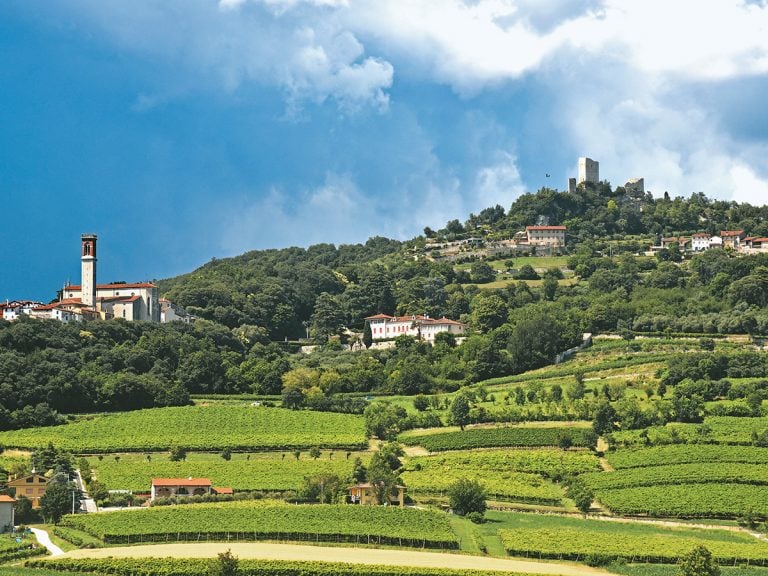
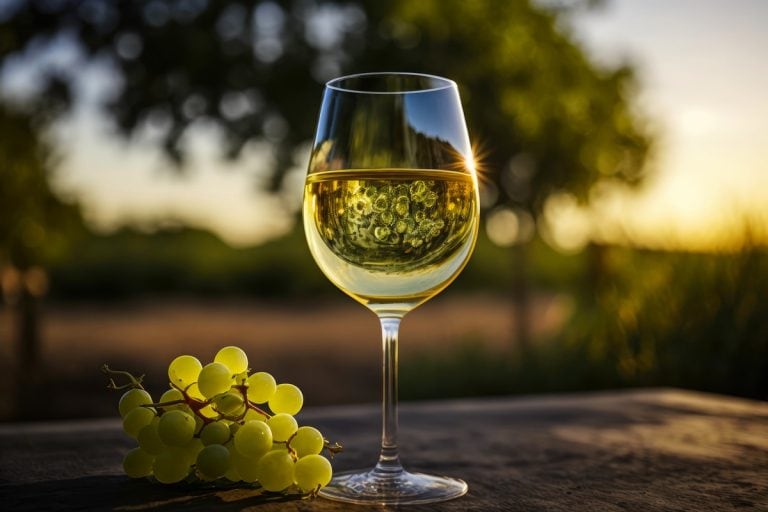 The 14 best Grechetto wines between Lazio and Umbria chosen by Gambero Rosso
The 14 best Grechetto wines between Lazio and Umbria chosen by Gambero Rosso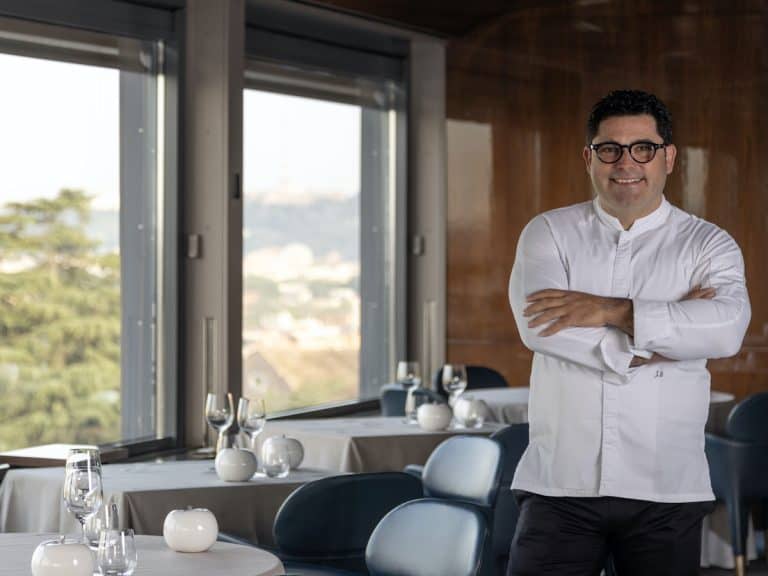 Chef Salvatore Bianco leaves Naples for the kitchen of the Eden Hotel in Rome
Chef Salvatore Bianco leaves Naples for the kitchen of the Eden Hotel in Rome Discover the best 6 ice cream parlors in Cagliari chosen by Gambero Rosso
Discover the best 6 ice cream parlors in Cagliari chosen by Gambero Rosso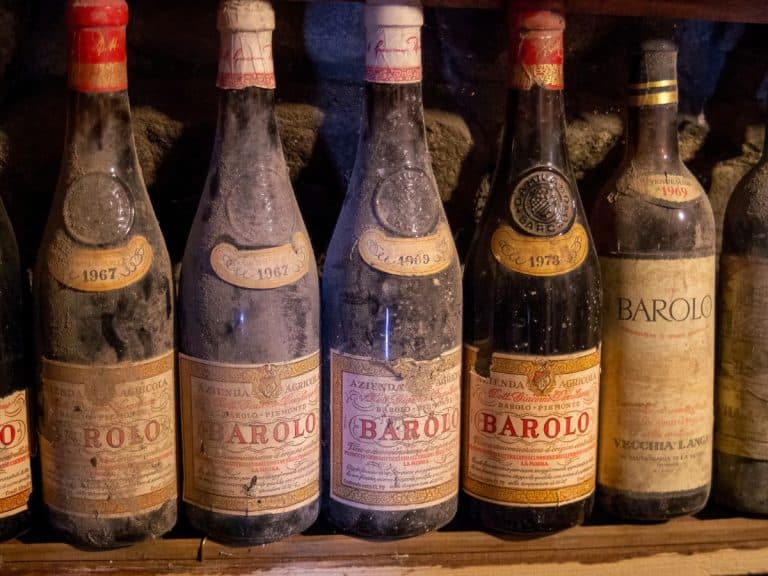 Barolo and the weight of tradition
Barolo and the weight of tradition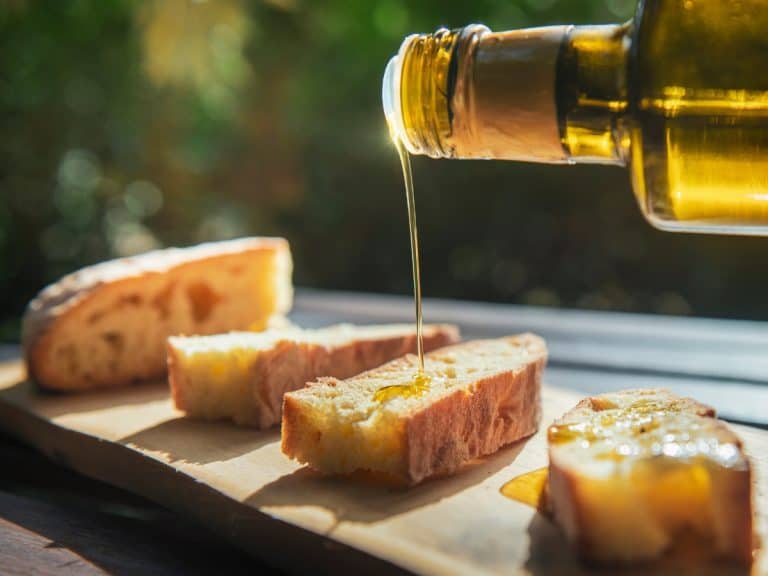 The best oils of Italy 2024 awarded with the Gambero Rosso Tre Foglie
The best oils of Italy 2024 awarded with the Gambero Rosso Tre Foglie 